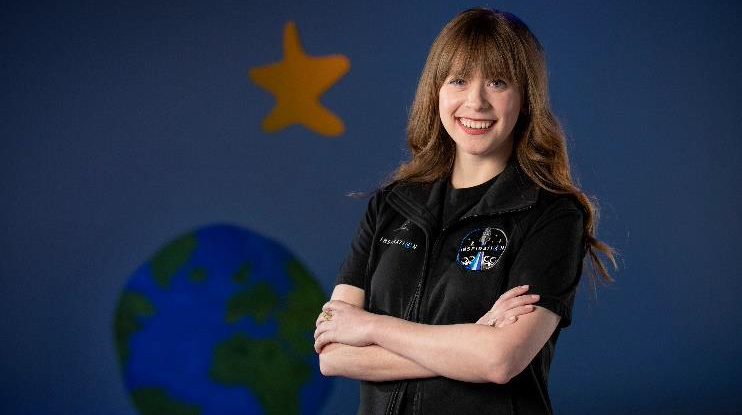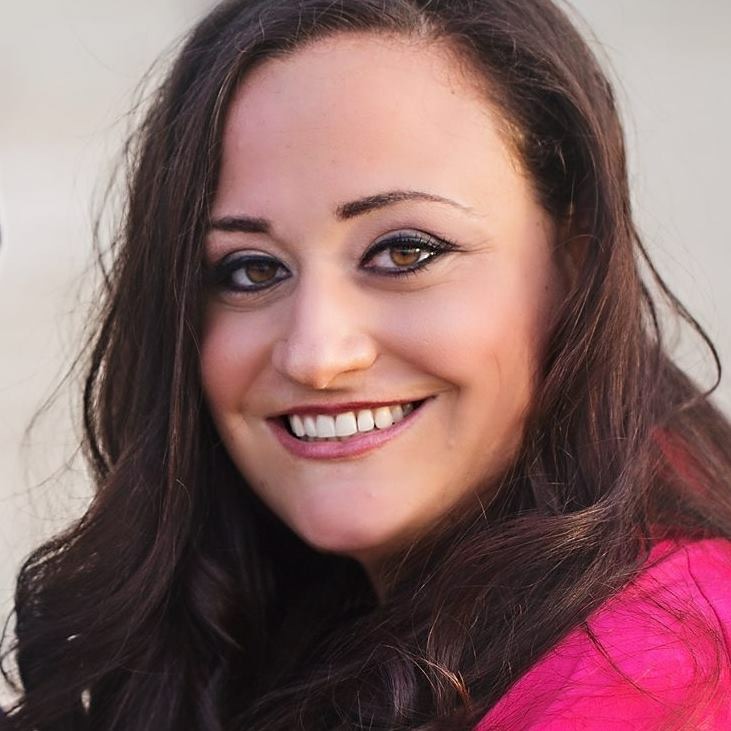Meet Hayley Arceneaux
After overcoming osteosarcoma (a form of bone cancer) at the age of 10, Hayley Arceneaux later returned to the very place that helped save her life—St. Jude Children’s Research Hospital. But, this time, she’s working as a physician’s assistant with patients who have leukemia and lymphoma.

Arceneaux is sharing the same strength that helped her overcome a hard-fought cancer battle with other young children. Her employer is also the reason she’ll be taking on another life-changing mission—as she heads to space later this year with the first all-civilian crew on the Inspiration4 mission.
The “Hope seat” she’s referring to is one of four seats on the ship that represents each astronaut’s purpose on Inspiration4’s mission to space—Leadership, Hope, Generosity, and Prosperity.
Leaders at St. Jude chose Arceneaux to embark on this journey to space. “I got an appointment from St. Jude to talk about a ‘unique opportunity,’ and after they explained the mission to me, they asked me if I wanted to go. I was shocked and wasn’t even sure I’d heard them right, but immediately said, ‘yes.’ Then, I said I should probably talk to my mom first. I called her and said, ‘You’re not going to believe this, but it’s true. St. Jude just invited me to go to space.’ We agreed it was the opportunity of a lifetime and I couldn’t pass it up. Next, I called my brother and sister-in-law who are both aerospace engineers, and they assured me that space travel is safe. I immediately called St. Jude back and said, ‘Sign me up!’”
According to Inspiration4’s website, the space mission, which is set to launch sometime in the last quarter of 2021, “will leave Earth from Kennedy Space Center’s historic Launch Complex 39A, the embarkation point for Apollo and Space Shuttle missions, and travel across a low earth orbit on a multi-day journey that will continually eclipse more than 90% of the earth’s population. Named in recognition of the four-person crew that will raise awareness and funds for St. Jude Children’s Research Hospital, this milestone represents a new era for human spaceflight and exploration.”
AOPA caught up with Arceneaux to find out more about her battle to overcome cancer and about her current job working with cancer patients as a physician assistant—along with the unique and exciting opportunity set before her to head to space.
How does it feel to know you will be on the first all-civilian mission to space?
This is such a pivotal moment in history that so many people have dreamed of for decades. I frequently reflect on the fact that this is the first all-civilian mission to space, and there’s so much hope and excitement that comes along with that. Space travel will never be the same after this, and I’m thrilled that our crew will be the one that opens up this frontier to a new generation of explorers.
What does the training entail for your trip?
As soon as we announced the final two crew members at the end of March, we left together as a crew to complete our first training. I’m happy to report everyone graduated from centrifuge school, which is where we were exposed to G forces similar to what we will experience during launch. We’ll have several more sessions together as a crew in the months leading up to the launch, including water survival training, orbital mechanics lessons, and more. By the time we launch, we will all be FAA-certified commercial astronauts, and I will receive some additional training since I will be the medical officer on the flight.
What are you the most excited about?
I’m most excited about the opportunity to interact with my patients while I’m in space. SpaceX is working right now to figure out how we can do that, and I know it’s going to be really meaningful for me and the kids. Children are so visual, so I want to show them exactly what their future could look like.
Does this experience make you want to pursue anything further in the aerospace or aviation industry, possibly learning to fly?
I definitely plan to return to my dream job at St. Jude—it’s the only thing I’ve wanted to do since I was 10, and I definitely plan to stay. Who knows! After this experience I may want to learn to fly. But I’m not a very good driver. Jared Isaacman is our incredible commander who conceived the idea to use the first all-civilian mission to space for good and specifically to benefit St. Jude Children’s Research Hospital. I’m definitely hoping for a ride with him and to maybe experience some aerobatics!
What would you say to other young girls who aspire to go to space one day?
I would tell other young girls who aspire to go to space to go for it! If I can do it, they can, and we need more girls in STEM—science, technology, engineering and math. Those fields weren’t always considered typical for women, but that’s changing for the better. It’s crucial that we open these fields to all types of diverse perspectives. This is important to me personally, and another reason I love working for St. Jude, which was founded on radical inclusion. When Danny Thomas opened the hospital in 1962, it was intentionally set in the segregated South in order to provide crucial care to families of all backgrounds and lead the way by accepting and treating patients, as well as hiring staff, without regard to race, religion, or creed.
How do you feel you inspire others?
One of the main reasons I wanted to come back to work at St. Jude was so that I could inspire patients and families who are going through cancer treatment now by showing them life beyond cancer is not only possible, but can be full and meaningful. I know that would have been meaningful to me when I was going through it, and I think this opportunity to participate in Inspiration4 gives me a greater platform to show not just my patients, but people everywhere that you can go through something challenging and come through even stronger than you were.
What would you say to other young girls who see you going to space and never feel that something like that could ever be possible for them?
I really want to encourage all young people, and especially girls, not to self-limit. I credit St. Jude and my family for always encouraging me to conquer my fears, and that’s what I want to tell other young people. I think the number one challenge most young people face is believing in themselves. I want them to know that if I can do it, they can.



